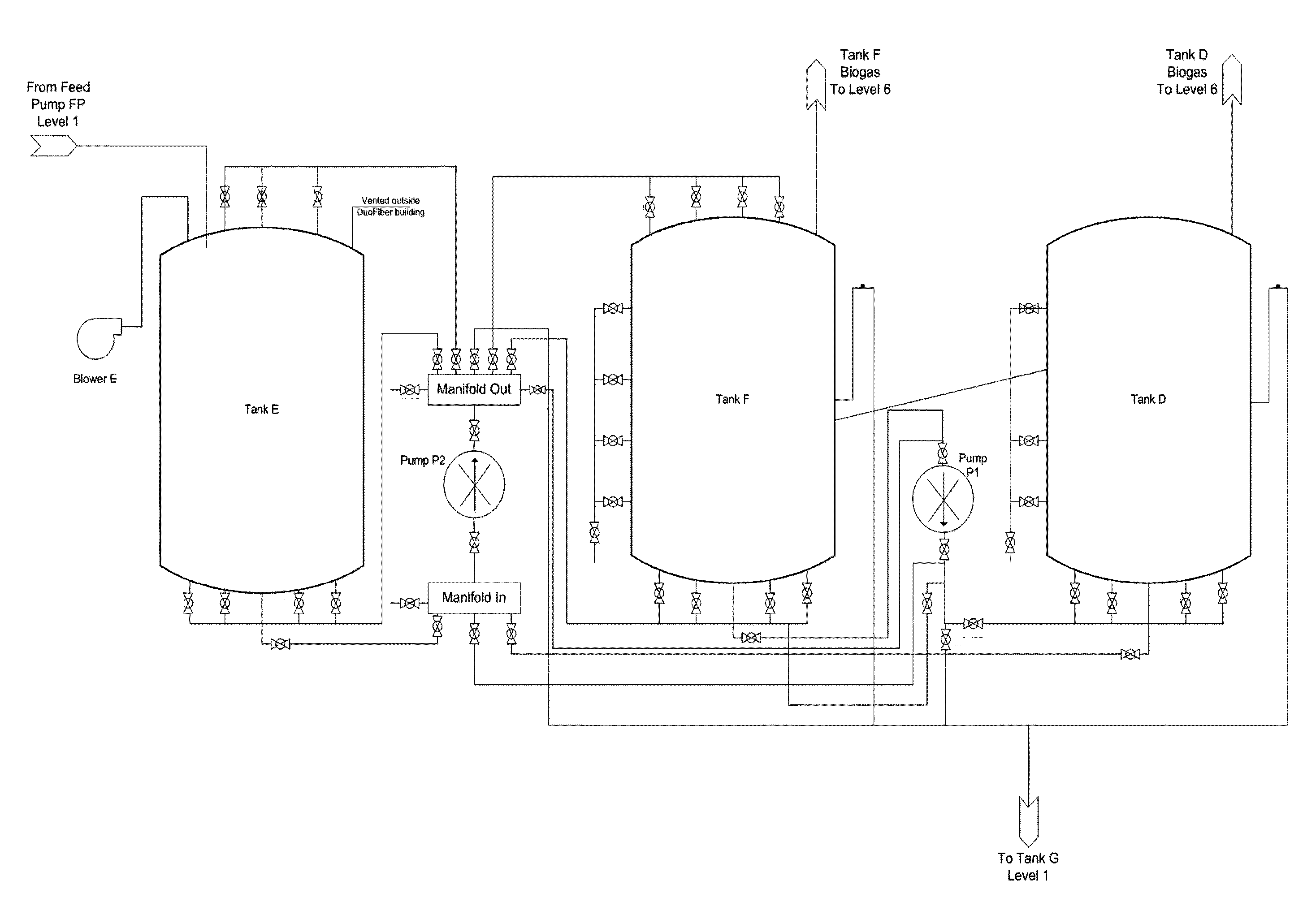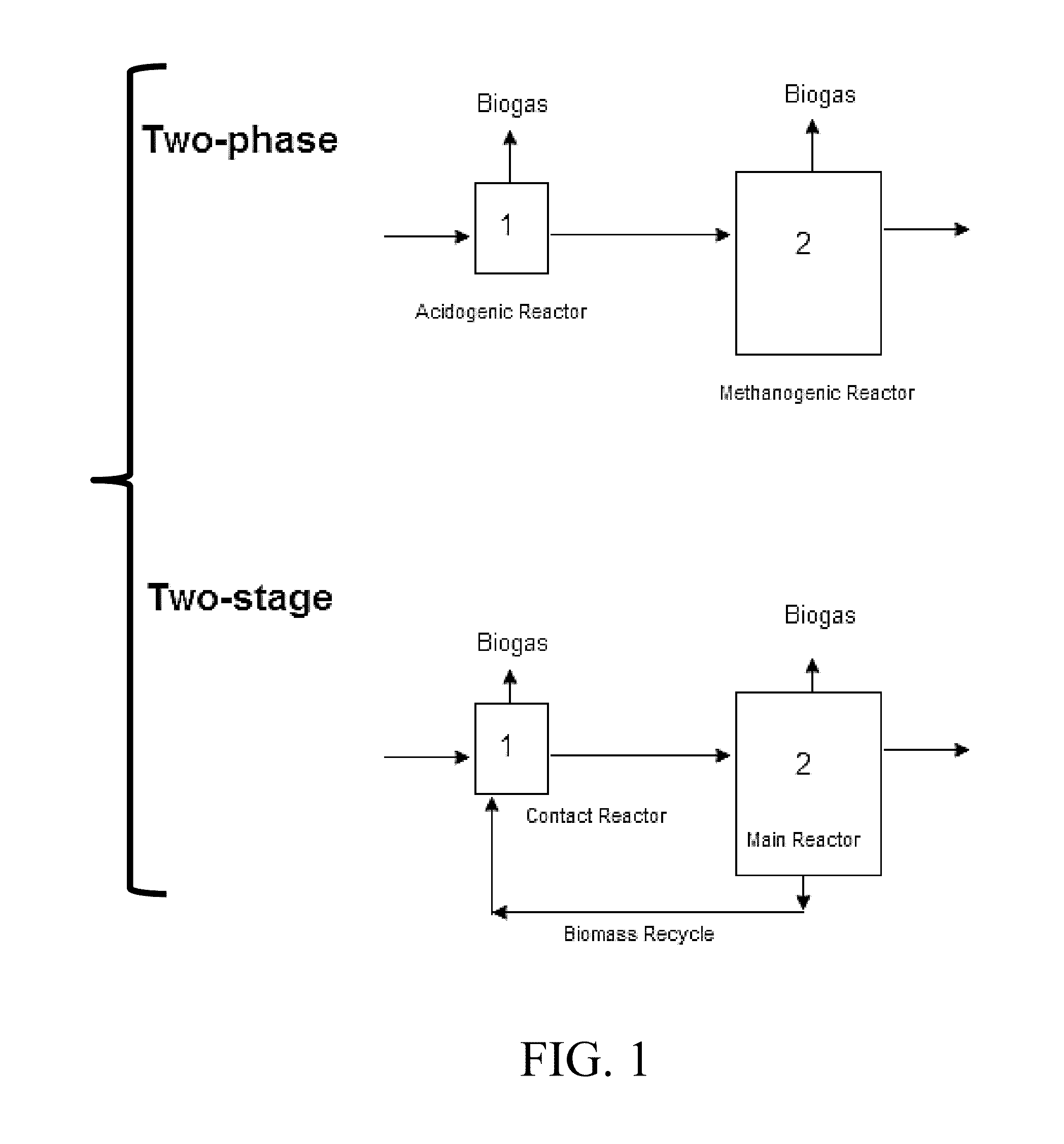System for anaerobic digestion of solid and soluble organic wastes, by-products and residues
a technology of organic waste and anaerobic digestion, which is applied in the field of system for anaerobic digestion of solid and soluble organic waste, by-products and residues, can solve the problems of large amount of hazardous waste produced by landfills, significant negative environmental effects, and explosive gas (methane), and achieves short hydraulic retention time, prevent washout, and reduce the effect of toxicity
- Summary
- Abstract
- Description
- Claims
- Application Information
AI Technical Summary
Benefits of technology
Problems solved by technology
Method used
Image
Examples
Embodiment Construction
Abbreviations and Definitions
[0041]SD refers to a single-stage anaerobic reactor for treating solids from an organic waste stream.
[0042]AFR refers to a single-stage anaerobic filter reactor for treating soluble components in waste water separated from an organic waste stream.
[0043]CH4 refers to methane.
[0044]COD refers to chemical oxygen demand.
[0045]HRT refers to hydraulic retention time.
[0046]OFMSW refers to organic fraction of municipal solid waste.
[0047]SCOD refers to soluble chemical oxygen demand.
[0048]SEBAC refers to sequential batch anaerobic composting.
[0049]SRT refers to solids retention time.
[0050]TS refers to total solids.
[0051]VFA refers to volatile fatty acid.
[0052]VS refers to volatile solids.
[0053]As used herein, the term “organic substrate” refers to carbonaceous feedstock that can be used in the process and device of the invention to produce gas (such as methane, hydrogen, and carbon dioxide) and compost / fertilizer.
[0054]The terms “biogasification” and “methanogene...
PUM
 Login to View More
Login to View More Abstract
Description
Claims
Application Information
 Login to View More
Login to View More - R&D
- Intellectual Property
- Life Sciences
- Materials
- Tech Scout
- Unparalleled Data Quality
- Higher Quality Content
- 60% Fewer Hallucinations
Browse by: Latest US Patents, China's latest patents, Technical Efficacy Thesaurus, Application Domain, Technology Topic, Popular Technical Reports.
© 2025 PatSnap. All rights reserved.Legal|Privacy policy|Modern Slavery Act Transparency Statement|Sitemap|About US| Contact US: help@patsnap.com



